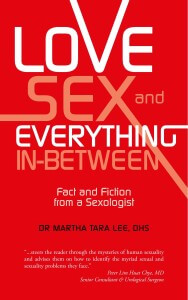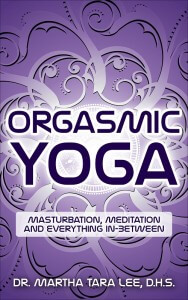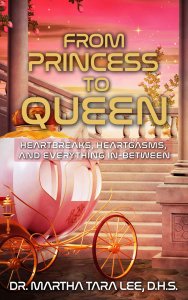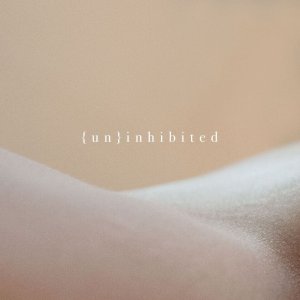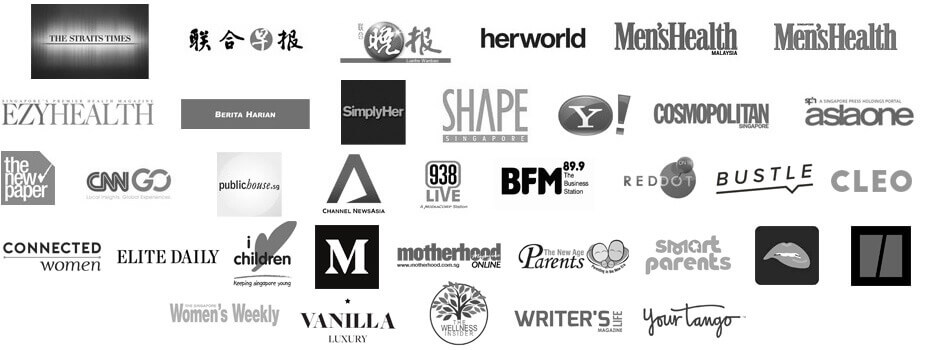Autism Spectrum Disorders (ASD) are a range of developmental disorders characterised by difficulties in socialisation and communication, and restricted or repetitive pattern of behaviours and interest. I’ve pulled together some books I’ve been told supports parents/ caregivers and educators working with individuals with ASD. The below reviews are extracted from online (not written by me). I hope this will be useful.
| 1. Sexuality and Severe Autism: A Practical Guide for Parents, Caregivers and Health Educators
Sexual health and sexuality can be difficult subjects for parents and caregivers to broach with autistic children, made more challenging when children are at the severe end of the autism spectrum. Some parents may even question the validity of teaching sexuality to those who are severely autistic. This practical handbook guides you through the process of teaching about sex and sexuality, answering all of the most crucial questions, including: Why is it necessary to teach this subject to my severely autistic child? When is the right time to start talking about these issues? How detailed and explicit should I be? What methods are most appropriate? It addresses male and female issues separately and covers public and private sexual behaviours, sexual abuse, cross-gender teaching and liaising with school, in addition to the more obvious areas such as physical changes and menstruation. This will be the ideal guide to teaching about sexual issues for any parent, caregiver or health educator caring for a person on the severe end of the autism spectrum. |
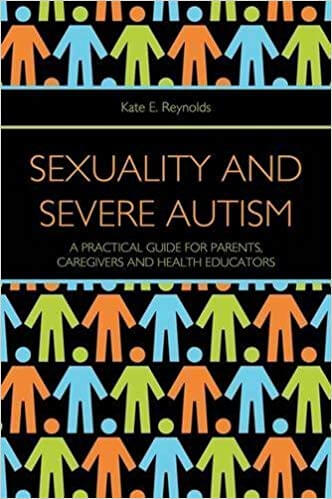 |
| 2. Things Tom Likes: A book about sexuality and masturbation for boys and young men with autism and related conditions (Sexuality and Safety with Tom and Ellie)
Tom likes lots of different things. He likes singing and watching TV in the family room. There are also things that Tom enjoys doing in private, like touching his penis. This accessible and positive resource helps parents and carers teach boys with autism or other special needs about masturbation. It covers when and where it is appropriate and helps to establish boundaries surrounding privacy more generally. With simple but explicit illustrations, this book provides the perfect platform to talk about sexuality with boys and young men with autism or special needs. |
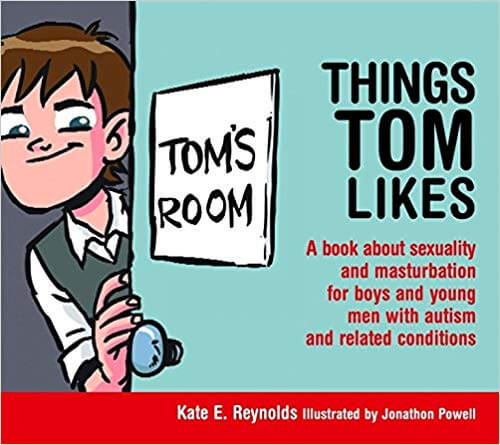 |
| 3. Things Ellie Likes: A book about sexuality and masturbation for girls and young women with autism and related conditions (Sexuality and Safety with Tom and Ellie)
Ellie likes lots of different things. She likes listening to music and making pizza. There are also things that Ellie enjoys doing in private, like touching her vagina. This accessible and positive resource helps parents and carers teach girls and young women with autism or related conditions about masturbation. It covers when and where it is appropriate and helps to establish boundaries surrounding privacy more generally. With simple but explicit illustrations, this book provides the perfect platform to talk about sexuality with girls and young women with autism or related conditions. |
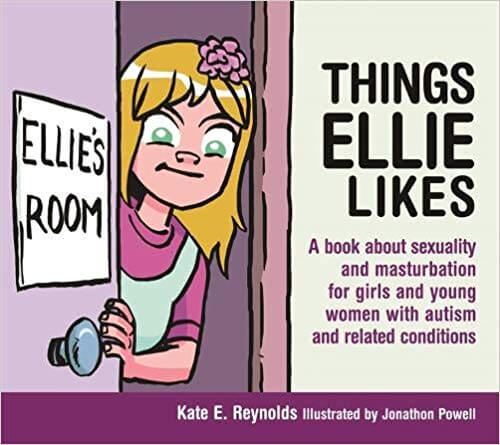 |
| 4. What’s Happening to Tom?: A book about puberty for boys and young men with autism and related conditions (Sexuality and Safety with Tom and Ellie)
Tom notices that his body is changing. Tom’s voice is different and hair is growing in new places. There are other changes happening too. Tom learns that he has started growing into a man. Following Tom as he begins to notice changes to his body, this simple resource helps parents and carers teach boys with autism or other special needs about puberty. It covers all the changes that they will experience, both emotional such as new feelings and physical such as wet dreams. This fully illustrated positive and entertaining book provides the perfect opportunity to talk about puberty with boys and young men with autism or special needs. |
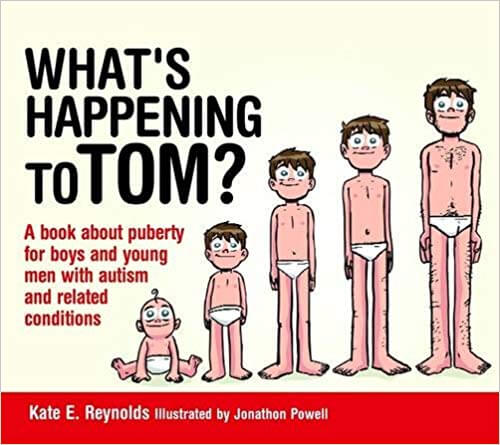 |
| 5. What’s Happening to Ellie?: A book about puberty for girls and young women with autism and related conditions (Sexuality and Safety with Tom and Ellie)
Ellie notices that her body is changing. Hair is growing in new places and there are other changes happening too. Ellie’s mum helps her understand that she has started growing into a woman. Following Ellie as she begins to notice changes to her body, this simple resource helps parents and carers teach girls with autism and related conditions about puberty. It covers all the changes that they will experience, both emotional such as new feelings and physical such as periods. This fully illustrated positive and entertaining book provides the perfect opportunity to talk about puberty with girls and young women with autism or related conditions. |
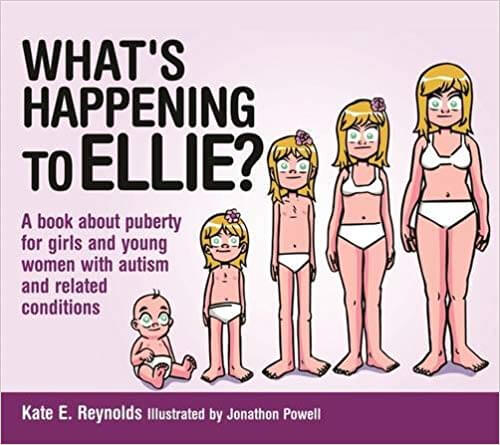 |
| 6. What to Do about Smearing: A Practical Guide for Parents and Caregivers of People with Autism, Developmental and Intellectual Disabilities
Addressing the often hidden, yet not uncommon, behaviour of faecal smearing among children and adults with autism and developmental and intellectual disabilities, this practical handbook shows how to tackle this often embarrassing and difficult issue in a positive way. Informing parents and caregivers of the many causes of smearing, the author offers tried-and-tested, everyday approaches for managing this behaviour. This supportive guidebook includes down-to-earth advice, helpful picture narratives, examples of how to prepare and use diary sheets for behaviour analysis, and practical exercises that can be carried out at home. There is also advice on what to do if a child ingests faeces, and dealing with persistent or recurring smearing. With a focus on positive low-arousal responses and featuring the voices of parents who have experience of their child’s smearing, families will feel supported and confident in identifying the causes of smearing, and be able to choose and carry out appropriate preventative approaches. This will also be a useful resource for professionals who encounter smearing behaviour, including social workers and SEN and teaching staff. |
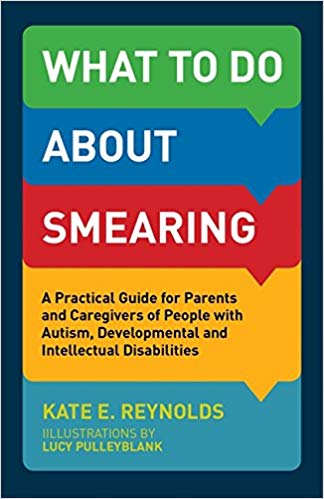 |
| 7. Girls Growing Up on the Autism Spectrum: What Parents and Professionals Should Know About the Pre-Teen and Teenage Years
This book is not only reassuring; it is inspiring, and bursting with ideas and achievable strategies. The authors write with authority and conviction, and tackle even the most difficult and delicate of topics. If ever you needed to be convinced that girls with ASD can overcome the difficulties and challenges of puberty and adolescence, have successful friendships and relationships and enjoy a healthy sexuality, then take the time to read this book – it is a must-have for families, teachers and therapists alike.’ Growing up isn’t easy, and the trials and tribulations of being a teenager can be particularly confusing for girls with Autism Spectrum Disorders (ASDs). This book covers all the concerns commonly faced by girls with ASDs and their parents, from periods and puberty to worries over friendships and ‘fitting in’. Providing professional perspectives alongside personal experiences from mothers, daughters and educators, this is a unique and indispensible guide for families and their daughters with ASDs, as well as the teachers and professionals who work with them. |
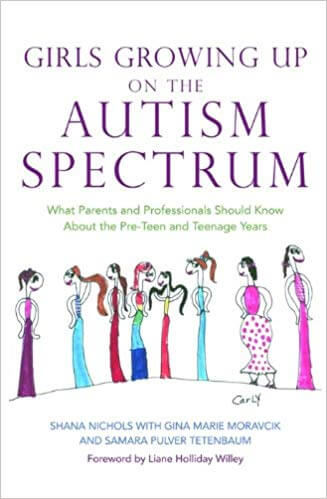 |
| 8. When Young People with Intellectual Disabilities and Autism Hit Puberty: A Parents’ Q&A Guide to Health, Sexuality and Relationships
Puberty, personal hygiene and sex can be difficult topics to broach with your child, especially when they have an intellectual disability or autism. The authors of this guide provide honest answers to challenging questions and provide solutions to the dilemmas that many parents face on a daily basis. Structured around issues related to puberty and emerging sexuality in children with disabilities or autism, such as physical changes, mood swings and sexual behaviour, the book presents case studies alongside practical guidance on how to overcome problems that commonly arise. The book also explains laws relevant to disability and sexuality and suggests appropriate sex education programmes to meet the needs of differing degrees of disability. |
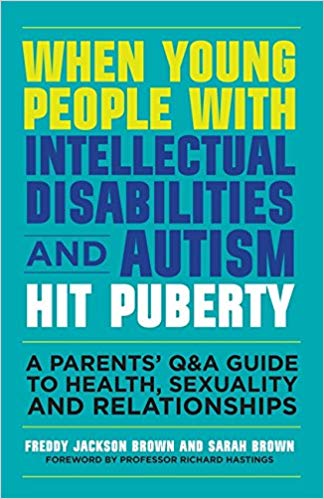 |
| 9. Oddly Normal: One Family’s Struggle to Help Their Teenage Son Come to Terms with His Sexuality
Three years ago, John Schwartz, a national correspondent at The New York Times, got the call that every parent hopes never to receive: his thirteen-year-old son, Joe, was in the hospital following a failed suicide attempt. After mustering the courage to come out to his classmates, Joe’s disclosure — delivered in a tirade about homophobic attitudes—was greeted with dismay and confusion by his fellow students. Hours later, he took an overdose of pills. Additionally, John and his wife, Jeanne, found that their son’s school was unable to address Joe’s special needs. Angry and frustrated, they initiated their own search for services and groups that could help Joe understand that he wasn’t alone. Oddly Normal is Schwartz’s very personal attempt to address his family’s own struggles within a culture that is changing fast, but not fast enough to help gay kids like Joe. Schwartz follows Joseph through childhood to the present day, interweaving his narrative with common questions, including: Are effeminate boys and tomboy girls necessarily gay? Is there a relationship between being gay and suicide or mental illness? Should a child be pushed into coming out? Parents, teachers, and counselors alike will welcome Oddly Normal and its crucial lessons about helping gay kids –and any kid who is different — learn how to cope in a potentially hostile world. |
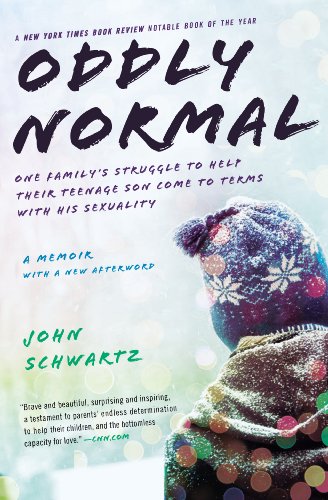 |
| 10. Dating When you’re on the Autism Spectrum: A Parent’s Guide to Supporting Teen and Young Adult Dating with Autism Spectrum Disorders
This e-book is written from the personal perspective of a parent supporting her children as they explore the world of dating. This is a challenging issue for any parent of a child or young adult and is even more challenging for parents of children with special needs. However having open and calm conversations with parents can help children to navigate this time as successfully as possible. |
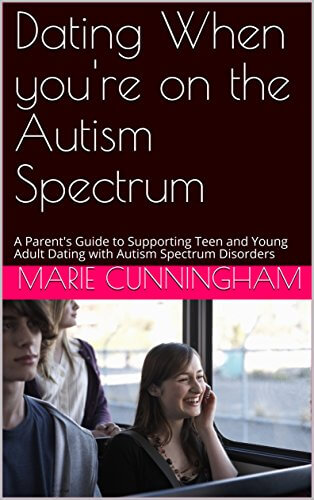 |
| 11. The Autism-Friendly Guide to Periods
Written by autistic author Robyn Steward, this is a detailed guide for young people aged 9 to 16 on the basics of menstruation. Created in consultation with young people, an online survey and a group of medical professionals, this is a book that teaches all people about periods, which can be a scary and overwhelming issue. Promoting the fact that everyone either has periods or knows someone who does, the book reduces the anxiety girls face in asking for help. It offers direct advice on what periods look and feel like and how to manage hygiene and pain. It also breaks up information using flaps and step-by-step photos of how to change pads and tampons, it discusses alternatives to tampons and pads, and gives information about possible sensory issues for people with autism. |
 |
| 12. An Exceptional Children’s Guide to Touch: Teaching Social and Physical Boundaries to Kids
The rules of physical contact can be tricky to grasp and children with special needs are at a heightened risk of abuse. This friendly picture book explains in simple terms how to tell the difference between acceptable and inappropriate touch, thereby helping the child with special needs stay safe. Each story covers a different type of touch from accidental to friendly to hurtful and will help children understand how boundaries change depending on the context. It explores when and where it is okay to touch other people, when and where other people can touch you, why self touching sometimes needs to be private, and what to do if touch feels inappropriate. This book is an invaluable teaching resource and discussion starter for parents, teachers and carers working with children with special needs. |
 |
| 13. A Quick & Easy Guide to Sex & Disability
A quick, easy, and educational comic book guide that will help change the way we talk about sex and sexuality for all bodies. “This guide can help disabled people (and their partners) on their journey toward self-love, better communication, and confidence.” — Alice Wong, Founder and Director, Disability Visibility Project All different kinds of bods want to connect with other bods, but lots of them get left out of the conversation when it comes to S-E-X. As explained by disabled cartoonist A. Andrews, this easy-to-read guide covers the basics of disability sexuality, common myths about disabled bodies, communication tips, and practical suggestions for having the best sexual experience possible. Whether you yourself are disabled, you love someone who is, or you just want to know more, consider this your handy starter kit to understanding disability sexuality, and your path to achieving accessible (and fulfilling) sex. Part of the bestselling and critically acclaimed A Quick & Easy Guide series from Limerence Press, an imprint of Oni Press. |
 |
| 14. The Handi Book of Love, Lust & Disability
The Handi Book of Love, Lust and Disability unearths new conversations on sex, relationships and disability. It’s beautifully designed and full of raw, powerful and inspiring stories, poetry and artwork from 50 phenomenal contributors from the disabled community. We want to make sure The Handi Book is within reach for everyone. Pay what you can, and every dollar will go towards funding our toys. By buying this book, you are helping put pleasure within reach, as every $ profit raised goes towards development of Handi’s first ever line of sex toys, designed with and for disabled people. |
![The Handi Book of Love, Lust & Disability by [Handi, Jess Tarpey, Katy Venables, Andrew Gurza]](https://m.media-amazon.com/images/I/41oa0lCvz6L.jpg) |
| 15. My Rainbow
A dedicated mom puts love into action as she creates the perfect rainbow-colored wig for her transgender daughter, based on the real-life experience of mother-daughter advocate duo Trinity and DeShanna Neal. Warm morning sunlight and love fill the Neal home. And on one quiet day, playtime leads to an important realization:Trinity wants long hair like her dolls. She needs it to express who she truly is. So her family decides to take a trip to the beauty supply store, but none of the wigs is the perfect fit. Determined, Mom leaves with bundles of hair in hand, ready to craft a wig as colorful and vibrant as her daughter is. |
 |
16. These are My Eyes, This is My Nose, This is My Vulva, These are My ToesThese are My Eyes, This is My Nose, This is My Vulva, These are My Toes is a book to help children of all genders and their caregivers normalize body parts. Different parts of the body are covered in fun images representing children from all sorts of lifestyles and backgrounds. The fun doesn’t stop there! This inclusive book has children with all sorts of body shapes and abilities to show we all have bodies and can have fun together! This text also includes gender diversity, pronoun usage, and even a little about body changes at puberty in non scary ways! Read along in a fun little rhyme, enjoy the captivating illustrations, and have fun using this text as a springboard for more conversation! |
 |
| 17. Meet ClaraBelle Blue
“Meet ClaraBelle Blue” is one of the most diverse children’s books on the market. The series helps children see that kids with special needs are just like them, kids – regardless of having a disability! As she likes to say, “I’m ClaraBelle Blue and I’m just like YOU!” |
![Meet ClaraBelle Blue (The ClaraBelle Series Book 1) by [Adiba Nelson, Elvira Morando]](https://m.media-amazon.com/images/I/51b5xC8H0sL._SX260_.jpg) |
| 18. Don’t Call Me Special : A First Look at Disability
This unique picture book explores questions and concerns about physical disabilities in a simple and reassuring way. Younger children can find out about individual disabilities, special equipment that is available to help the disabled, and how people of all ages can deal with disabilities and live happy and full lives. Titles in this series for younger children explore emotional issues that boys and girls encounter as part of the growing-up process. Books are focused to appeal to kids of preschool through early school age. Written by psychotherapist and counselor Pat Thomas, A First Look At books promote positive interaction among children, parents, and teachers, and encourage kids to ask questions and confront social and emotional questions that sometimes present problems. Books feature appealing full-color illustrations on every page plus a page of advice to parents and teachers. |
 |
|
Provides ideas for teaching children with Down syndrome about their bodies, puberty, and sexuality. This book covers relevant issues and concerns for children of various ages, such as: labelling and explaining private body parts; identifying and expressing emotions; respecting personal space; and, teaching self-care and hygiene. |
 |
|
Considered by many to be “The Joy of Sex for people with disabilities,” Enabling Romance candidly covers: shattering sexual stereotypes; building self-esteem; creative sexual variations; reproduction and contraception for people with disabilities; specific information on several different physical and sensory disabilities, including spinal cord injury, multiple sclerosis, postpolio syndrome, muscular dystropy, cerebral palsy, amputation, blindness and deafness. Note: Includes explicit illustrations. |
 |
| 21. Sexuality and Relationship Education for Children and Adolescents with Autism Spectrum Disorders
Children and adolescents with Autism Spectrum Disorders (ASD) require specialized teaching strategies when learning about puberty, sexuality and relationships. This professional resource offers practical teaching advice geared towards the needs of young people on the autism spectrum. Beginning with information on good practice, policy, teaching methods and recent research, the book then divides into key sex education topics that assist professionals in developing their own individualized and developmentally appropriate curricula. Covering issues of gender, public and private, puberty, hygiene, emotions, sex and more, each topic provides an overview of the difficulties that children with autism might experience, discussion and activity ideas and photocopiable resources including instructional stories, checklists and illustrations. The final section demonstrates how to respond to ongoing patterns of inappropriate behaviour and put together a behaviour plan. Aiming to explain and support the child’s developing sexuality while also addressing crucial issues of safety, this book is a much-needed teaching manual for all professionals working with children and young adults with autism including educators in mainstream and special education, psychologists, therapists and social workers. |
 |
Videos
Sex Ed for People with Disabilities: Introduction
Disability And Sexuality
All people are sexual beings, no matter what their bodies can or cannot do physically or what type of support they may need from time to time or all of the time. It’s important for young people living with disabilities or differently abled young people to learn about sexuality.
If you think there are other books or resources I should add to the list, please comment below or email me. It can benefit other people. Thanks!
About Dr. Martha Tara Lee
Surrounded by friends who were sexually inhibited and struck by dire lack of positive conversations around sex and sexuality in Singapore, Dr. Martha Tara Lee set out to make a positive difference in embarking on her doctorate in human sexuality before launching Eros Coaching in 2009. Today, she remains dedicated to working with individuals and couples who wish to lead self-actualised and pleasure-filled lives.
She also holds certificates in counselling, coaching and sex therapy, and her fourth degree – a Masters in Counselling in May 2018. In practice for more than 10 years, she is the only certified sexuality educator and certified sexuality educator supervisor by the American Association of Sexuality Educators, Counselors and Therapists (AASECT) in Singapore.
Often cited in the local media, Dr. Lee is the appointed sex expert for Men’s Health Singapore, and Men’s Health Malaysia. She was recognised as one of ‘Top 50 Inspiring Women Under 40′ by Her World in July 2010, and one of ‘Top 100 Inspiring Women’ by CozyCot in March 2011. She has published four books: Love, Sex and Everything In-Between, Orgasmic Yoga, From Princess to Queen and {Un}Inhibited.
Martha works with individuals and couples in private coaching sessions, and conducts her own workshops. She takes prides in making sure all her workshops are also fun, educational, and sex-positive. This comes easily to her because even though she is extremely dedicated and serious about her work, she fundamentally believes that sex is meant to be fun, wonderful, amazing and sacred. As such, this serious light-heartedness has shone through again and again. For her full profile, click here. Email her here.

 Become a Patron!
Become a Patron!
